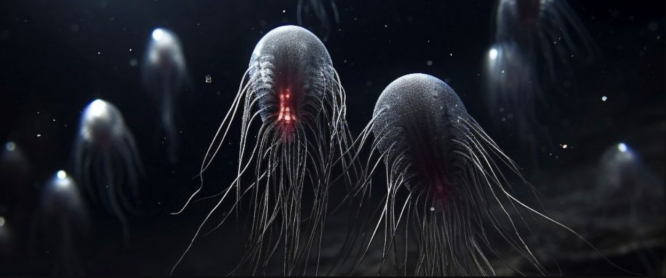Molecules in ancient rocks show a wild ecology of early life that hunted and flourished in the waters for over a billion years.
In a low-oxygen planet 1.64 billion years ago, a broad spectrum of hitherto unknown creatures dominated life on Earth.
The protosterol biota, discovered by paleobiogeochemists Jochen Brocks and Benjamin Nettersheim of the Australian National University, were unlike anything extant today.
They may have been the world’s first predators, feeding on ocean microorganisms, and the progenitors of all eukaryotic life. All living plants, animals, and fungi—including us—are included.
“Molecular remains of the protosterol biota detected in 1.6-billion-year-old rocks appear to be the oldest remnants of our own lineage – they lived even before the Last Eukaryotic Common Ancestor (1.2 billion years ago),” explains Nettersheim of the University of Bremen in Germany.
“These ancient creatures were abundant in marine ecosystems across the world and probably shaped ecosystems for much of Earth’s history.”
Scientists believe eukaryotic life—organisms with nuclei—emerged over a billion years ago since it dominates today.

Paleobiologists have long searched for these early eukaryotes, but identifying ancient creatures is difficult. Since they lived over a billion years ago, any traces they left behind are likely to be quite deteriorated and difficult to interpret.
The oldest rocks come from Australia’s Barney Creek Formation, 1.64 billion years old.
They searched for steroids, a biomarker of early eukaryotes initially predicted by Nobel winner scientist Konrad Bloch in 1994. Most eukaryotes can manufacture steroids like cholesterol.
“We employed a combination of techniques to first convert various modern steroids to their fossilized equivalent; otherwise, we wouldn’t have even known what to look for,” Brocks says.
“Scientists overlooked these molecules for decades because they do not conform to typical molecular search images,” he says. We found identical ancient chemicals in hundreds of rocks from billion-year-old streams throughout the planet once we understood our target.

The discovery demonstrates that these eukaryote biomarkers had been hidden in plain sight all along, but what the animals that made them were like is unclear as fossils have not been identified.
The researchers assume that protosterol biota creatures were bigger and more complicated than bacteria and thrived on them as the next food chain up. “We believe they may have been the first predators on Earth, hunting and devouring bacteria,” Brocks explains.
These species ceased leaving fossils 800 million years ago. After this, algae and fungus arrive, then mammals come 700 to 600 million years later.
The Tonian Transformation, one of Earth’s most fundamental ecological changes, allowed modern eukaryotes to arise by causing the protosterol biota to collapse.
The finding of sterols comparable to those our bodies generate in very different creatures allows us to trace our past back further than ever before.
“The highlight of this finding is not just the extension of the current molecular record of eukaryotes,” says paleobiogeochemist Christian Hallmann of the German Research Center for Geosciences in Germany.
“Given that the last common ancestor of all modern eukaryotes, including us humans, was likely capable of producing’regular’ modern sterols, chances are high that the eukaryotes responsible for these rare signatures belonged to the stem of the phylogenetic tree.”

